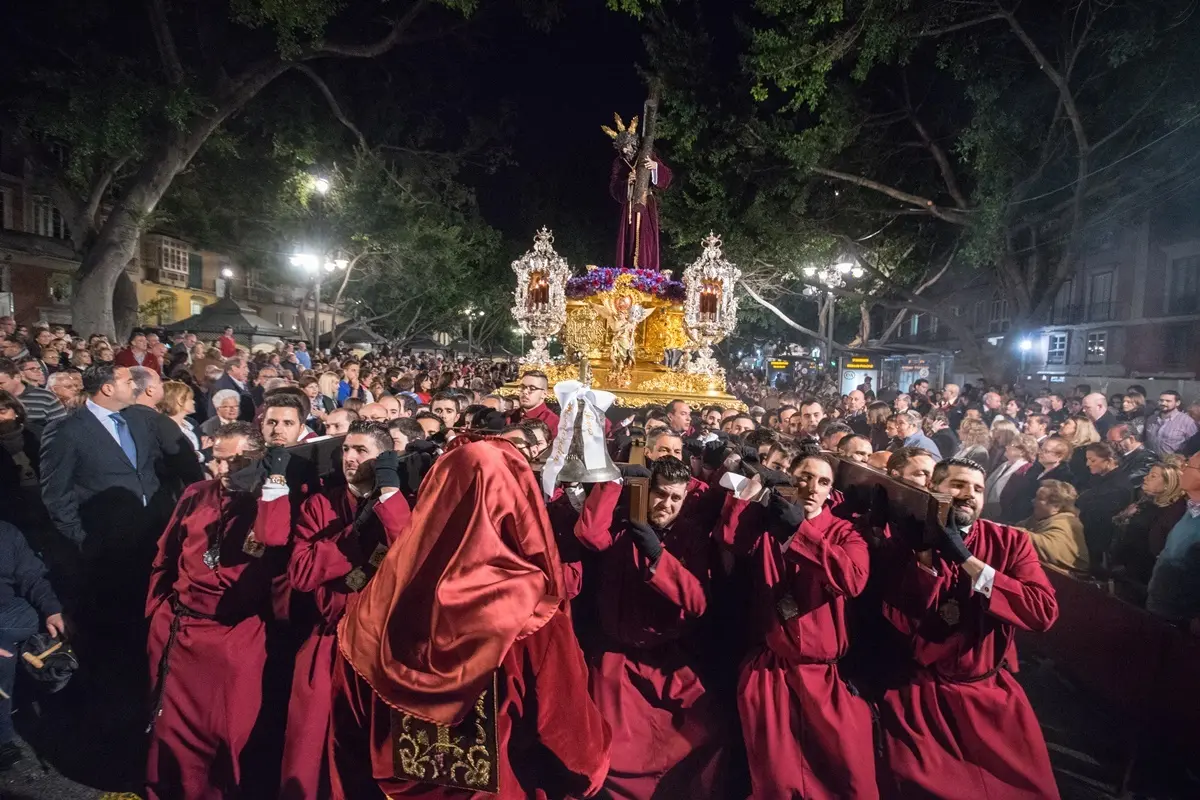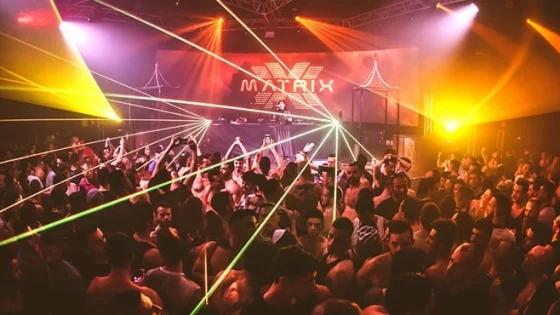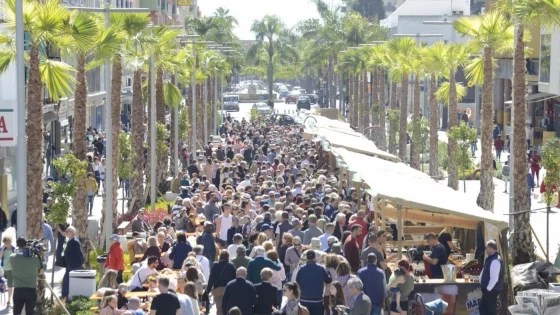
One of the most important festivities in the city for many years, Semana Santa (Holy Week) in Malaga is one of the most important in Spain, along with that of Seville. Passion, tradition, culture and fervour as beautiful sculptures walk through the city, amidst the aroma of incense and the vibrant sound of the bands in the background.
Discover everything you need to know about Holy Week and Easter in this guide and drive around Malaga with your all-inclusive car hire carefree. Explore its origins, the specific terms, the programme, itineraries and routes of each procession, as well as other important information you should know if you are going to follow this famous and attractive celebration that you have to experience at least once in your life.
Table of Contents
What is Holy Week?
Holy Week and Easter is a religious event in which the life, passion and death of Jesus Christ is commemorated through the exhibition of sculptures and carvings mounted on thrones that walk through the streets of the city.

The different brotherhoods and sisterhoods of the city organise processions that follow a planned route showing the sculptures and carvings of religious figures, mainly Jesus Christ and the Virgin Mary.
They are accompanied by Nazarenes and the men who carry the throne, as well as bands of music that create a unique atmosphere. All this will make you feel the emotion with which all the locals, whether religious or atheist, experience this festivity and tradition.
In some brotherhoods, the procession is accompanied by representatives of public bodies, such as the administration, police, fire brigades or members of the army, such as the well-known legionnaires or paratroopers.
Don’t worry if you don’t understand some of the terms we have used. Below we explain all the terms you need to know.
History of Holy Week
The first brotherhoods and sisterhoods arose after the Reconquest of Malaga in 1487 among the different religious orders in the region. Some of the current ones, such as Veracruz, Sangre or Monte Calvario date back to the 16th century, although it was in 1921 when they were organised under the Agrupación de Cofradías.

It was after the Civil War when the reconstruction of the sculptures and thrones began, and it once again became more relevant as a religious event in the city. During the 1980s it became popular outside the national borders, and began to receive visits from foreign tourists, thus raising awareness of this curious and ancient tradition.
Being the city of museums, Malaga had to have a museum about this religious event. In the Museo de la Semana Santa de Málaga, called Museo del Arte Cofrade, you can see ancient sculptures with their costumes and dresses, as well as elements used during the procession such as poles, censers or staffs. You can also enjoy a collection of historical images of the Holy Week and Easter of Malaga, going through all its history.

Location: calle Muro de San Julián, 2, Málaga
Opening hours:
- Tuesday to Friday: 10.00-14.00, 16.00-18.00
- Saturday: 10.00-15.00
- Sunday and Monday: Closed
Price: 2 euros (children only pay 1 euro)
Telephone: 952 21 04 00
Recorrido Oficial (Official Route)
The official route is the section of the route that all processions are obliged to follow. It may vary from year to year, although historically it has included the Alameda Principal, Calle Larios and Plaza de la Constitución.
Along this route, structures are set up to limit access to the route and chairs are placed on both sides of the street, which people can rent in the months leading up to the event, so that they can see all the processions without moving from their seats.
This year, the official route of the Malaga Easter Week 2024 starts in the Plaza de la Constitución, goes down Calle Larios and turns into Calle Atarazanas, and then heads towards the Alameda Principal. It continues to Plaza de la Marina and turns towards the Cathedral, where some brotherhoods make their penitential procession. You can see it indicated on the map below.
Relevant information
When is Holy Week in Malaga 2024?
Holy Week in Malaga in 2024 starts on Sunday 2nd April, with Palm Sunday, and ends on Sunday 9th April with Easter Sunday. The date may vary from year to year depending on how the calendar moves, but it always takes place between the end of March and the beginning of April.
Places to eat in Malaga
As in any big city in Andalusia, the options for eating out are very varied. However, at Easter, with so many people flocking to the city centre to watch the processions, the places will be particularly crowded and you will find it difficult to find a table in many of them.
Nevertheless, there are places to eat in Malaga that you should try to visit during this period, as they are closely linked to the event. Here are some of the places we suggest:
Taberna cofrade Las Merchanas: This place was born as a small tavern of brotherhood tradition. Over time, and thanks to its limited, tasty and very attractive menu, it became a reference place to have a bite to eat for a reasonable price.
This also attracted the young public of the city, expanding to other areas of the city. In the centre it has two premises, both of them in small alleyways, which does not prevent it from being one of the best known restaurants in Malaga.

- Location: C/ Juan de Padilla, 6, 29008 Málaga (the other establishment is in C/ Andrés Pérez, 9, just one street away).
- Opening hours: Tuesday to Saturday 13:00-16:30, 20:00-24:00
- Price: €.
- Telephone: 678 53 00 83
- Must try: Their montaditos and croquettes.
Restaurante Cofrade Entre Varales: With a large terrace and an interior decoration of a classic tavern with elements of Semana Santa, this restaurant is a regular place for snacks and tapas in Malaga. Many of its dishes carry typical terms of this event.

- Location: C/ Nosquera, 15, 29008 Málaga
- Opening times: Monday closed / Tuesday to Saturday 12:00-16:00, 20:00-24:00 / Sunday 12:00-24:00
- Price: €€.
- Telephone: 645 43 63 63 64
- Must try: Patatas Ciriales, with aioli and sugar cane honey.
Taberna Lolita: located on a double bend near the start of the official route, this restaurant reflects traditional Andalusian taverns and offers a simple menu with a modern twist. From its terrace, located on a pretty double bend, you can see most of the processions making their way to the entrance of the official route.

- Location: C/ Granada, 17, 29015 Málaga
- Opening hours: Monday to Friday 10:00-1:00 / Saturday and Sunday 10:00-1:30.
- Price: €€€€.
- Telephone: 952 63 96 26
- Must try: Ensaladilla rusa and flamenquín cordobés (Cordovan flamenquín)
How to get around Malaga during Easter Week?
By car
All the processions move through the city centre, which means streets are blocked off and a huge influx of locals and visitors. As a result, parking in the city centre can be practically impossible, even in the many car parks in the centre of Malaga.
If you have decided to rent a car without excess in Malaga, we recommend that you use it only to move to the outer districts of the city, but under no circumstances park near the centre. From these neighbourhoods you can take some of the following public transport options.
By public transport
Bus: the most common means of transport for locals and visitors, as the municipal company in charge provides many special routes, with special timetables adapted to the itineraries.
The usual bus routes during these days will undergo changes, as almost all the routes pass through the centre, specifically through the Alameda Principal. This, together with other possible street closures, means that the routes will be altered on the days when necessary.
Metro: Since the completion of the metro works, it has become another means of transport to get to the centre of Malaga. In this case, the closest stop to the centre is the María Zambrano train station, also known as Vialia.
The metro timetables during Holy Week are also usually adapted to the timetables of the processions to allow people who stay to see the processions that leave later to have another way of getting around.
The weather in Semana Santa 2024
During the weeks leading up to the celebration, all the people of Malaga, Nazarenes and men of the throne are constantly attentive to the evolution of the weather, as the sculptures and the thrones are very sensitive to water, and elements of great artistic value can be damaged.

The weather for Semana Santa 2024 in Malaga is expected to be slightly cloudy, without rain, as Malaga enjoys 300 days of sunshine a year. Temperatures are expected to fluctuate between 13 and 20 degrees Celsius, although they always tend to exceed these expectations.
However, the month of April tends to be particularly rainy in the province, so it will be necessary to keep a close eye on which processions take to the streets and which finally decide to stay at home. This decision is taken by the Eldest Brother, and he usually waits until the last minute to make the most of the options to go out.
Definitions and terms
This event has some very characteristic ways of naming everything that encompasses this ecosystem, which it is imperative that you know if you don’t want to get lost in a world of terms. Here are some basic terms to help you survive Easter 2024.

Thrones: the structure on which the images or sculptures are carried, they are usually carried by a very variable number of throne men, some thrones having up to 250 men.
Processions: refers to the whole group of thrones, Nazarenes, assistants, music band and other religious components or members of the public administration that accompany the sculptures. They are usually made up of two thrones: a Virgin and a Christ.
Nazarenos: people who accompany the sculptures on their route, dressed in typical tunics in the colours of their brotherhood. They generally wear a hood and cover their faces.
Throne men (or bearers): those who carry the thrones on their shoulders throughout the route.
Hermano Mayor: the main person in charge of the Brotherhood and, therefore, of the procession and the decisions that have to be taken.
Mayordomo: the person in charge of a section of the procession. These stewards are coordinated by the Procession Steward.

Capataz: the person in charge of coordinating the advance of the throne and its bearers. The throne is guided by means of a bell installed on the front of the throne and by voice. The bell is used to indicate when the throne should stop, advance, go backwards or lower and raise the throne, according to the bell tolls. Meanwhile, the voice guides the turning to the sides. He also has assistant foremen (ayudante de capataz) so that all the men on the throne can hear them clearly.
Casa Hermandad: building or structure where the thrones are kept, and from where they will start their departure. They are usually used as museums of the brotherhood itself.
Cofradía: each of the groupings around a group of sculptures and their own nazarenos. They are usually associated with a church or parish, where the sculptures are kept when it is not Easter Week.

Route or itinerary: pre-established route along which the processions will move, defining the streets they will pass through and the approximate times at which they will do so. It helps the public to know where to see the processions.



